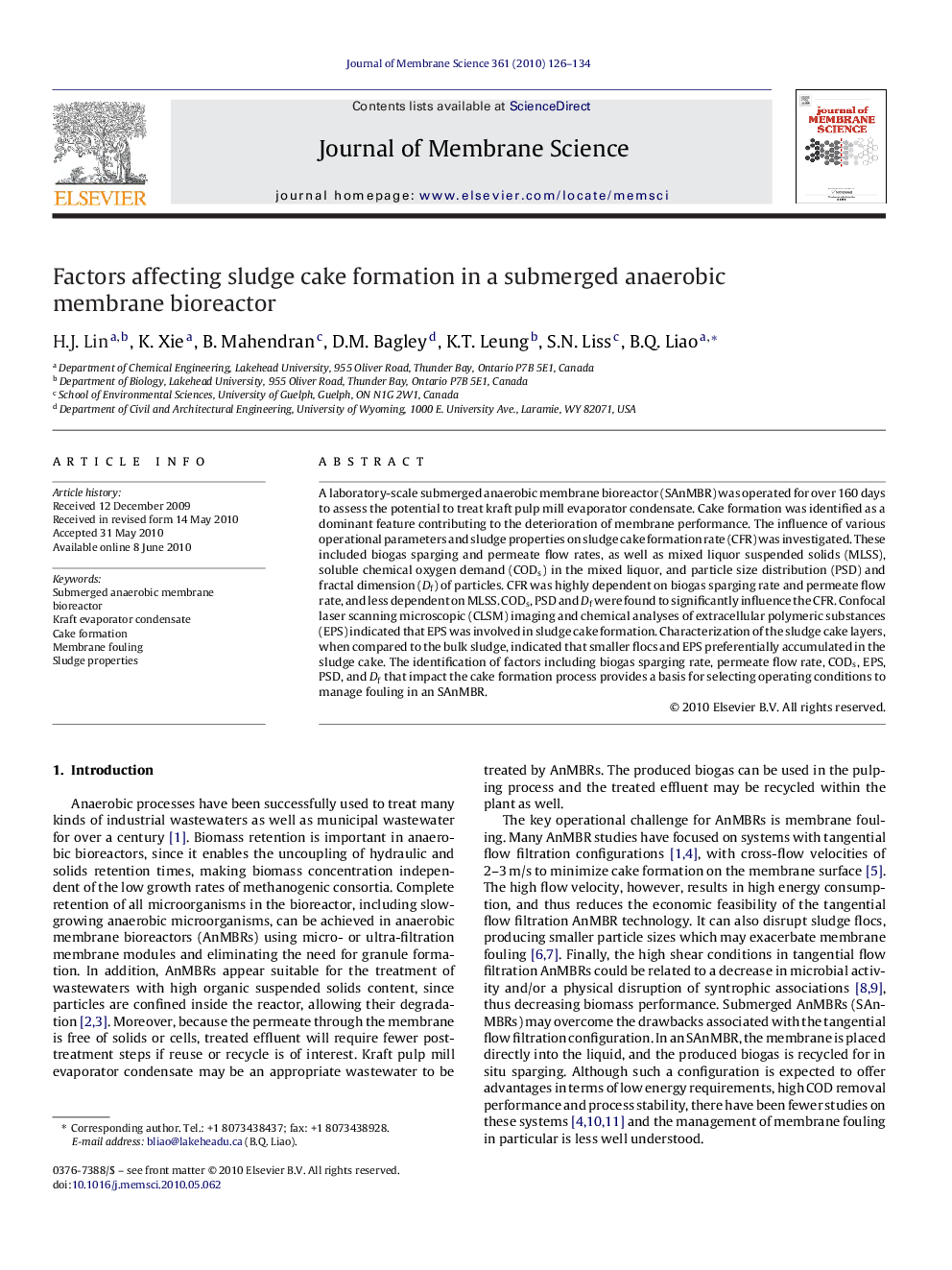| Article ID | Journal | Published Year | Pages | File Type |
|---|---|---|---|---|
| 636064 | Journal of Membrane Science | 2010 | 9 Pages |
A laboratory-scale submerged anaerobic membrane bioreactor (SAnMBR) was operated for over 160 days to assess the potential to treat kraft pulp mill evaporator condensate. Cake formation was identified as a dominant feature contributing to the deterioration of membrane performance. The influence of various operational parameters and sludge properties on sludge cake formation rate (CFR) was investigated. These included biogas sparging and permeate flow rates, as well as mixed liquor suspended solids (MLSS), soluble chemical oxygen demand (CODs) in the mixed liquor, and particle size distribution (PSD) and fractal dimension (Df) of particles. CFR was highly dependent on biogas sparging rate and permeate flow rate, and less dependent on MLSS. CODs, PSD and Df were found to significantly influence the CFR. Confocal laser scanning microscopic (CLSM) imaging and chemical analyses of extracellular polymeric substances (EPS) indicated that EPS was involved in sludge cake formation. Characterization of the sludge cake layers, when compared to the bulk sludge, indicated that smaller flocs and EPS preferentially accumulated in the sludge cake. The identification of factors including biogas sparging rate, permeate flow rate, CODs, EPS, PSD, and Df that impact the cake formation process provides a basis for selecting operating conditions to manage fouling in an SAnMBR.
